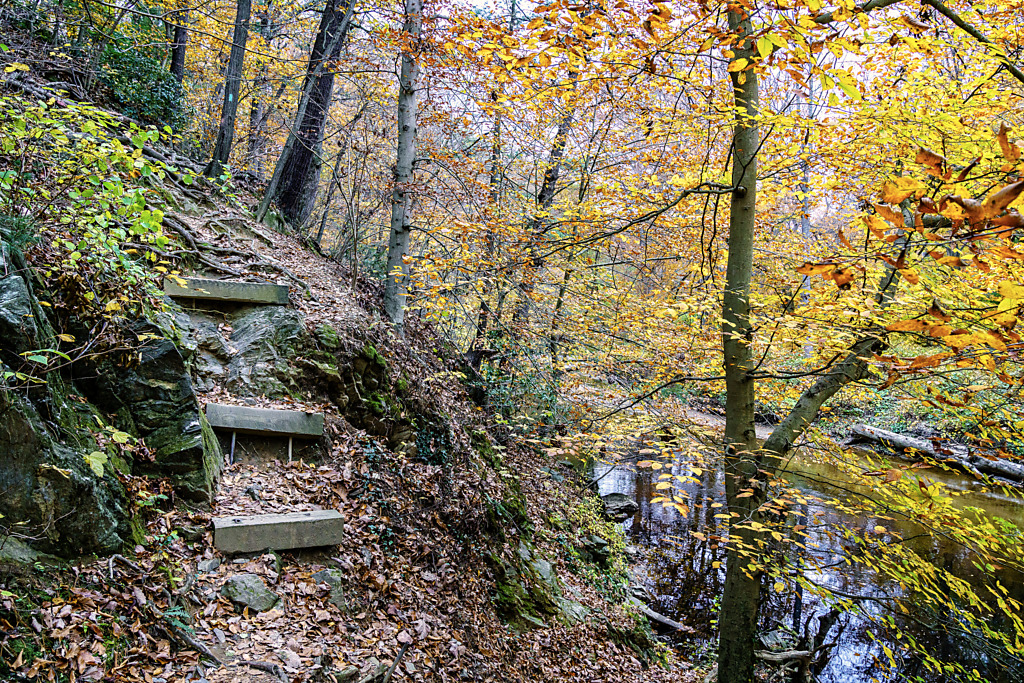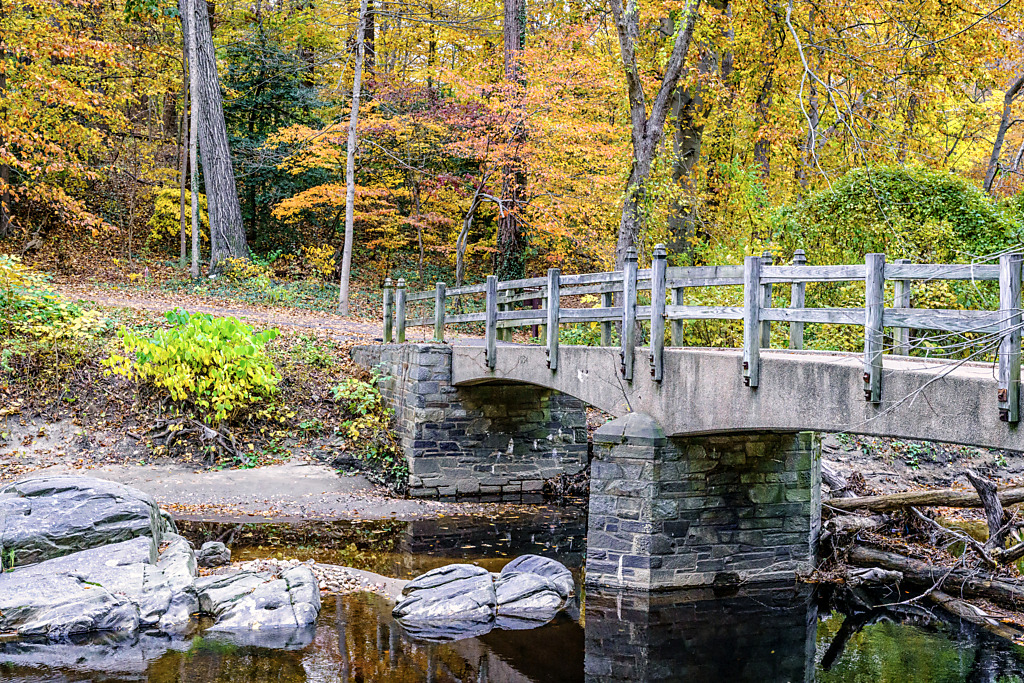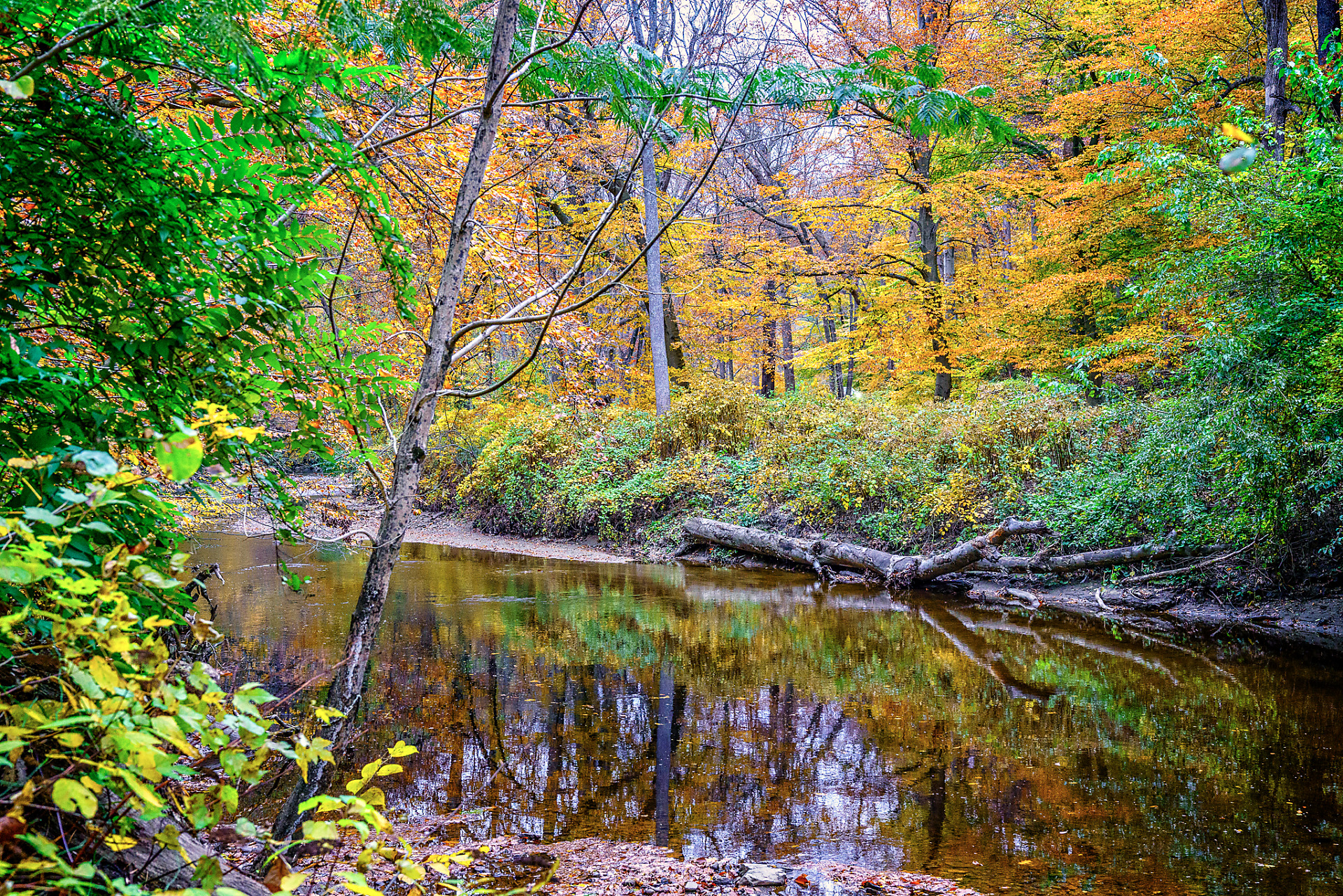The plentiful and accessible natural beauty of the Washington, DC, region — in the form of trees and waterways, trails and parks — is one of its facets that I most appreciate.
Whenever I grow weary of the bustle and concrete of urban life, I don’t need to travel for hours (or days!) anywhere else to escape. I can just walk a little while, or at most ride Metro or Uber, to rejuvenate my spirit through woodsy adventure.
I took advantage of that this month with an evening hike in Rock Creek Park, where bright orange, amber, and sometimes red leaves still festooned the trees.

I post-processed with ON1 Effects to help showcase the autumnal beauty that I saw — in particular, Dynamic Contrast to add crispness, the 81A photo filter to convey an appropriate warmth, and vignetting to help focus attention on the most important areas of the pictures. This was, of course, after Lightroom adjustments of shadows, black levels, clarity, and exposure.

The point of such processing, at least for me, isn’t to transform photos into anything unnatural or unrealistic. It’s to memorialize and showcase the feelings inspired by a setting, in this case awe at the colorfulness of fall and majesty of the woods.
All photos are processed.
All photos are processed; the only question is when the processing takes place, and by whom. There’s no such thing as a perfect photographic copy of a scene that’s free of interpretation or embellishment. If you point and shoot with your phone and do nothing yourself to alter the photo, that photo is still processed. It just happens automatically, subject to the tastes and judgments of the creators of the processing algorithm.
The difference when you take photographs using a dedicated camera, is more control of how and when processing happens. You can configure your camera to produce “final” JPEG files itself, using a color mode you set (“landscape,” “portrait,” “standard,” etc.) Or you can shoot in RAW and do more of the processing afterward yourself (post-processing) when you “develop” the results into JPEGs for the web or TIFFs for print.
Now let’s say you’ve shot a landscape in RAW and, when looking at the photo afterward in Lightroom, decide to use the Standard color preset and not adjust any sliders for contrast, black level, shadows, etc. In that case, the photo might be staid and unaffecting. If that’s not how you felt when seeing the landscape with your own eyes, then applying no more post-processing to the image would make it less honest than if you post-processed it to inspire the emotions you actually felt when you were there.
So I post-process my photos to make them more true to life.
